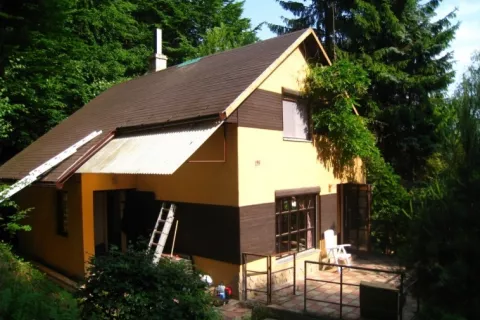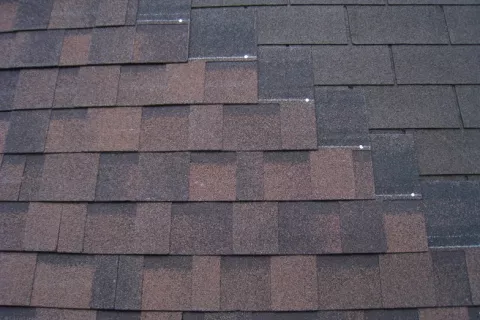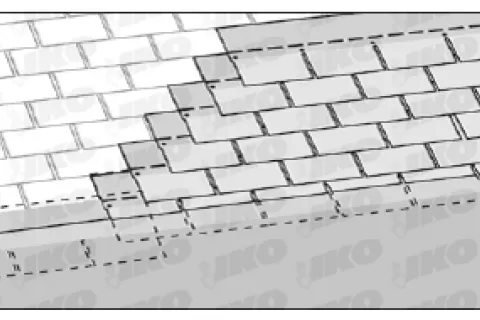Search
Search
1361 results were found.
Step by step application of reroofing
Renovations of old, worn out shingle roofs are mostly simple and inexpensive jobs when using IKO bitumen roof shingles in combination with the best techniques. The material cost is not the main cost; Stripping off the roof shingles, disposal and labor are even more significant costs! Before starting off any project, first check out whether the existing roof shingle layer could remain in place or has to be removed. Depending on local building codes at least three layers of roof shingles can be applied before stripping off the roof shingles is necessary.
Even more important are:
- The condition of the existing roof structure must be strong enough to support the additional load of the roof shingles.
- Overall appearance must be flat, if sagging is visible, there might be structural problems needing to be fixed.
- Split and nail flat all buckled, raised tabs and curling roof shingles.
- Nail warped decking material if necessary.
- The fastening anchorage for the nails in the new roof shingle layer must be tested.
- The existing surface has to be reasonably smooth.
- In general even roof shingles, not completely worn out, can be shingled over.
- Replace missing roof shingles or shingle tabs and nail down accidentally curled roof shingle edges.
- If necessary, replace rotten wood trim or worn out chimney and rake flashings or to add eaves flashing.
- Uniform and straight edge of drip edge help prevent water seepage under the old roof shingle edges.
- Additional ventilation should be added.
Before & after: Reroofing over existing roof with Cambridge Xpress 53


Application requirements
Inspect the complete roof construction looking for defects before starting to reroof. The existing roof should be dry before reroofing as trapped moisture can shorten the lifespan of your roof structure. Clear the roof from debris and fungus before application. Ridge and hip covering has to be removed. New ones have to be installed after the new layer has been applied. Make sure nails are long enough to assure sufficient anchorage. To nail down new hip and ridge cap shingles even longer nails are needed. Consider exchanging old metal flashing for new ones. All existing roof penetrations should be taken out of the old layer and have to be reinstalled in the new layer. Take into account that some techniques require more roof shingles than others.
Application techniques
There are 2 techniques to install shingles that we would like to highlight: bridging and nesting.
Bridging method
The bridging method allows the new course of roof shingles to overlay 2-3 courses of the existing roof shingles. The bridging method usually allows for the proper exposure of the roof shingles and is commonly used when applying metric-sized roof shingles over English-sized or over wood shingles. Installation using this method may lead to “telegraphing” of the underlying material.
Telegraphing (or telemarking) means that the old layer of old shingles may be visible in the newly applied layer of shingles.

Nesting method
The nesting method usually minimizes the “telegraphing” noted above and is commonly used when applying English or metric-sized roof shingle over like-sized roof shingles. Nesting minimizes the uneven appearance of the roof when compared with bridging over existing roof shingles. Installation using this method may shorten the roof shingles exposure and uses more roof shingles.
The nesting method butts the top edge of the new roof shingle to the bottom edge of the existing roof shingle. This method sometimes is also called “Butt and run” technique.

Note:
Try fitting the new roof shingles into the existing layers prior to deciding whether to use this technique. The existing exposure (the exposed part of the roof shingles) mainly determines what the new visual part will be.
Conclusion:
Reroofing is a great option for those who don’t need a complete roof replacement, who have a generally good roof which is at the end of its life cycle or a roof that is slowly losing its function. As opposed to a roof replacement, it does not involve tear off, which means that it reduces both time and cost for the project. It is always a good idea to consult with a roofer you trust, who can do an inspection, give you an accurate estimate, and advise you on what the best option is for you.
